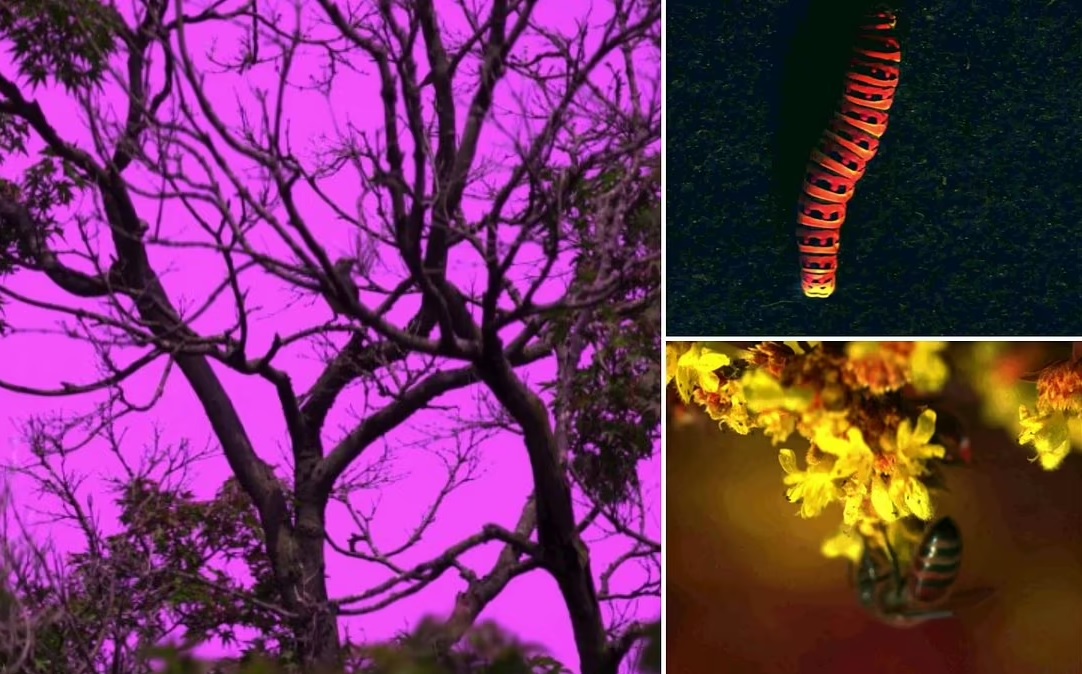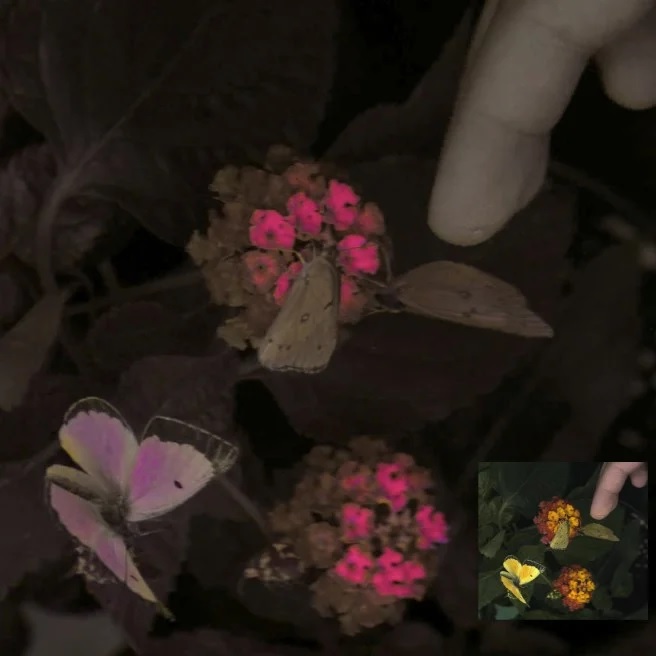
Scientists have discovered a technology that will allow us to see through an animal's eyes better than ever before. This technology uses a combination of new hardware and software to produce images and video clips that accurately represent the colors seen by animals such as bees and birds.
In new research, the team found just that Her innovation nearly matches the accuracy of traditional, but more restricted, methods used to record animal color vision.
Human vision is certainly not shabby. Compared to most other animals, for example, we see objects with much better clarity and detail. but Some animals have their own unique visual abilitiesSuch as the ability to perceive wavelengths of light that cannot be seen by the human eye.
Scientists have successfully created representations of the colors that animals see through false-color images. But although the methods used today to create these images are reliably accurate, they also require a lot of effort to implement and have obvious limitations, such as only working with still images in certain lighting conditions.

A team of researchers in the UK and US believe it has been developed A more flexible and dynamic technology for translating animal color vision to our eyes. It will work by combining existing photographic methods with new hardware and software.
“The system works by splitting light between two cameras, with one camera being sensitive to UV light, while the other is sensitive to visible light. Separating UV from visible light is achieved using a piece of optical glass called a beam splitter. This optical device reflects the UV rays It resembles a mirror, but allows visible light to pass through in the same way that clear glass does.Study authors Daniel Hanley (an associate professor of biology at George Mason University) and Vera Vasas (a biologist at Queen Mary University of London) told Gizmodo. “This way the system can simultaneously capture light from four different wavelength regions: ultraviolet, blue, green and red.”.
The team's software then converts the data captured by the cameras into “perceptual units” that correspond to the known sensitivity of the animal's photoreceptors. From there, scientists say, you can create images or, for the first time, truly accurate animated videos of the colors animals see in the world.
“The idea of recording UV radiation has been around for a long time, but relatively few attempts have been made due to the technical difficulties involved. Interestingly, the first published UV video dates back to 1969! Our new approach provides a A value of scientific accuracy that allows our videos to be used for scientific purposes. Hanley and Vasas said.
Is the sky blue?
Forget the blue sky. Ultraviolet light dominates the bright, clear sky. Humans cannot see ultraviolet light, but many birds can. “The bird sky will essentially be an ultraviolet sky,” said Daniel Hanley, a sensory ecologist at George Mason University.
in Their paper describing the technology, published in the journal PLOS Biology, the The researchers tested a camera system to translate the colors seen by bees and UV-sensitive birds onto objects like butterflies. They also compared the system's performance with that obtained by spectrophotometry.,A The gold standard method Used to create false color images. Depending on environmental conditions, they found that the accuracy of their system ranged from 92% to 99%.
The team already has plans to use the new technology to enhance nature documentaries in the future. Their work has been previously funded National Geographic Society The team includes award-winning nature photographer and director, Neil Losen. They also believe that this system will allow them to make new scientific discoveries.
“We have a number of ideas that we plan to examine with our camera, but the most exciting questions will be those that we have not yet examined.” Hanley and Vasas noted. “It's only now that we're starting to record videos of the natural world that we're starting to see how much information is out there.”.
The researchers have two operating systems and are preparing to build a third, but they also hope others will be inspired to replicate their technology. They point out that all of their devices are based on readily available commercial cameras and components, while their software is open source for anyone interested in studying and improving.
“We've made all of this open specifically to encourage the research and film community to adapt and improve the system. We believe this will accelerate growth to everyone's benefit.” The study authors reported.
How does a bird see a rainbow?
How does a mouse see a rainbow?
How does a bird see a butterfly?
How does a bee see people?
How does a bee see the larva?
source: FOXreport.gr
FBI expert warns that hackers are 'fishing' for cookies, not passwords – How to protect yourself
Unstoppable Palworld – Beats Counter Strike's record on Steam

“Total alcohol fanatic. Coffee junkie. Amateur twitter evangelist. Wannabe zombie enthusiast.”





More Stories
Is this what the PS5 Pro will look like? (Image)
Finally, Windows 11 24H2 update significantly boosts AMD Ryzen – Windows 11 performance
Heart Surgeon Reveals The 4 Things He ‘Totally Avoids’ In His Life